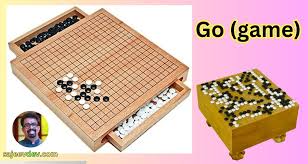The Goa game is a highly strategic Euro-style board game that immerses players in the 16th-century spice trade in India. Designed by Rüdiger Dorn and originally released in 2004, the game offers deep gameplay mechanics, thoughtful decision-making, and elegant resource management. Whether you’re a board game enthusiast or someone exploring strategic games beyond the mainstream, Goa is a title that deserves attention.
In this comprehensive guide, we will explore what makes the Goa board game so compelling, how it’s played, and why it continues to be a favorite among strategy game lovers. We’ll also answer some common questions in the FAQ section and provide a clear conclusion on whether this game is right for you.
What Is the Goa Board Game?
Goa: A New Expedition is set in the 16th century, during the peak of Portuguese influence in India. The game focuses on economic development, exploration, and expansion in the spice trade. Players take on the roles of merchants trying to build the most successful trading empire.
Your goal is to earn the most victory points (VPs) by managing plantations, shipping spices, and expanding your colony’s infrastructure. The game allows for 2 to 4 players and typically lasts around 90 to 120 minutes.
Key Features of Goa Board Game
1. Auction Mechanic
The heart of the game lies in its innovative auction system. Each round begins with an auction phase where players bid on tiles representing plantations, colonists, ships, spices, and more. Winning the right tile can dramatically alter your strategic path. Bidding wisely is crucial because money is limited and needed for other actions as well.
2. Development Tracks
Goa features five key development tracks:
- Colonists
- Ships
- Plantations
- Tax Income
- Expeditions
These tracks determine your ability to perform actions and collect resources. Players can invest in improving these areas to gain powerful abilities, additional actions, or end-game points.
3. Resource Management
Resources include spice cubes, money, colonists, and cards. Efficiently managing these elements is vital to success. For example, you might need a ship to collect spices, colonists to run plantations, and money to expand your empire.
4. Tactical and Strategic Balance
Unlike many luck-heavy games, Goa rewards long-term planning. While there is some randomness in expedition cards and spice production, strategic planning outweighs chance.
How to Play the Goa Board Game
Setup:
- Each player receives a player board, development markers, and a starting spice plantation.
- Auction tiles are arranged on the central board.
- Starting money and resources are distributed.
- Players take turns being the auctioneer.
Gameplay:
The game is played over two main eras, each consisting of four rounds. Each round follows a structured sequence:
- Tile Auction Phase: Players take turns placing auction markers and bidding on various tiles.
- Action Phase: Based on the development track, players perform up to three or more actions. Actions include:
- Establishing plantations
- Shipping spices
- Advancing development markers
- Drawing expedition cards
- Earning income
At the end of eight rounds, players count up their victory points from various sources including shipping, expeditions, and development progress. The player with the most points wins.
Goa Board Game Strategy Tips
- Balance Your Development: Don’t overly focus on one track. Diversification helps you remain flexible.
- Control the Auction: Being the auctioneer can give you control. Timing your bid placements strategically is key.
- Watch Opponents: Pay attention to their development and auction needs. Denying them a tile can be as helpful as gaining it for yourself.
- Maximize Actions: Early game investments in the development track pay dividends later.
- Manage Colonists Wisely: You can’t run plantations without colonists. Ensure you have a steady supply.
What Makes Goa Stand Out?
Elegant Design
Goa game apk exemplifies the elegance of German board game design—simple rules with deep gameplay. It doesn’t rely on chance but instead promotes thoughtful planning.
Replayability
With different auction tile setups and strategic paths, the game offers high replayability. Every session feels different, encouraging players to refine strategies.
Historical Theme
The theme of colonial spice trading is well-integrated, though not overly detailed. While it’s not a simulation, the gameplay aligns well with historical motifs of exploration and trade.
Goa Board Game FAQs
Q1: Is Goa suitable for beginners?
A: Goa is considered a medium-to-heavy Eurogame. It’s not ideal for complete beginners but great for intermediate players looking to level up their strategic thinking.
Q2: How long does the Goa board game take to play?
A: A typical game lasts about 90 to 120 minutes, depending on player experience.
Q3: Can you play Goa with two players?
A: Yes, Goa supports 2 to 4 players. The two-player mode works well but may lack some of the auction tension found in larger groups.
Q4: Is the Goa board game still in print?
A: The original 2004 edition went out of print, but Goa: A New Expedition, a revised edition, was released later. Availability can vary, so check board game retailers or second-hand marketplaces.
Q5: What is the recommended age for players?
A: The game is best suited for players aged 12 and up due to its complex mechanics.
Conclusion: Should You Buy the Goa Board Game?
If you’re a fan of strategic Eurogames like Puerto Rico, Power Grid, or Agricola, the Goa board game is a must-try. It offers deep strategic planning, a balanced economic system, and an immersive historical setting. While it may not be the best choice for newcomers or casual gamers, it shines in groups that appreciate depth, balance, and meaningful decisions.

